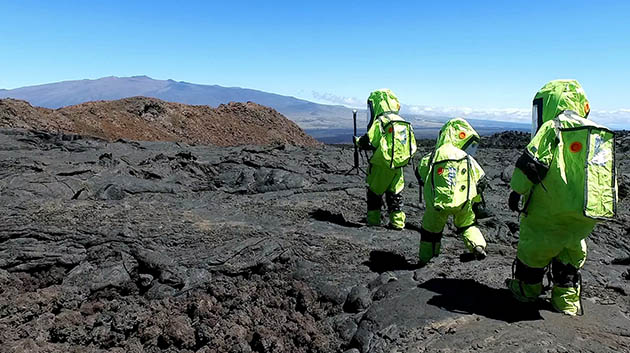
After four months of living in a Mars-like environment, the six HI-SEAS Mission V crewmembers have hit the halfway mark. They have learned to deal with challenges such as a 20-minute communications delay, gearing up in hazmat suits to explore the geologic features of the landing site and cooking with dehydrated food.
“The midpoint is an interesting time in the mission,” observed crewmember Brian Ramos. “In some sense, time has been flying by. It sounds a little crazy, but I think at the end of the mission I am not going to be ready to go.”

HI-SEAS stands for Hawaiʻi Space Exploration Analog and Simulation, which is run on Mauna Loa by the University of Hawaiʻi at Mānoa. The NASA-funded research is focused on crew selection, teamwork and cohesion. Crewmembers have been keeping busy with various experiments and projects. Ramos’ personal project is 3D printing, something that may be useful in longer duration space missions of the future. Heʻs printed objects ranging from cookie cutters to test tube holders.
According to engineering officer Ansley Barnard, cooking has been an important part of living in the HI-SEAS habitat, and the crew eats really well.
“Cooking is one of my main hobbies, and I really enjoy it in the habitat,” Barnard said. “It’s fun to make new recipes, to try things out and make something delicious for your crewmates.”
Growing and harvesting fresh herbs for crew consumption is the important work of the crew’s mission specialist for biology Joshua Ehrlich. He is also helping NASA to define optimal characteristics for growing plants in space.
Ehrlich said, “My hope is that the research being done here at HI-SEAS will be a major contribution to the planning of mankind’s next giant leap to Mars.”
HI-SEAS plans to conduct Mission VI, also eight months in duration, in 2018.
For more images of HI-SEAS Mission V crew, visit the UH Flickr.
Read more UH News stories about HI-SEAS missions.
—By Kelli Trifonovitch

